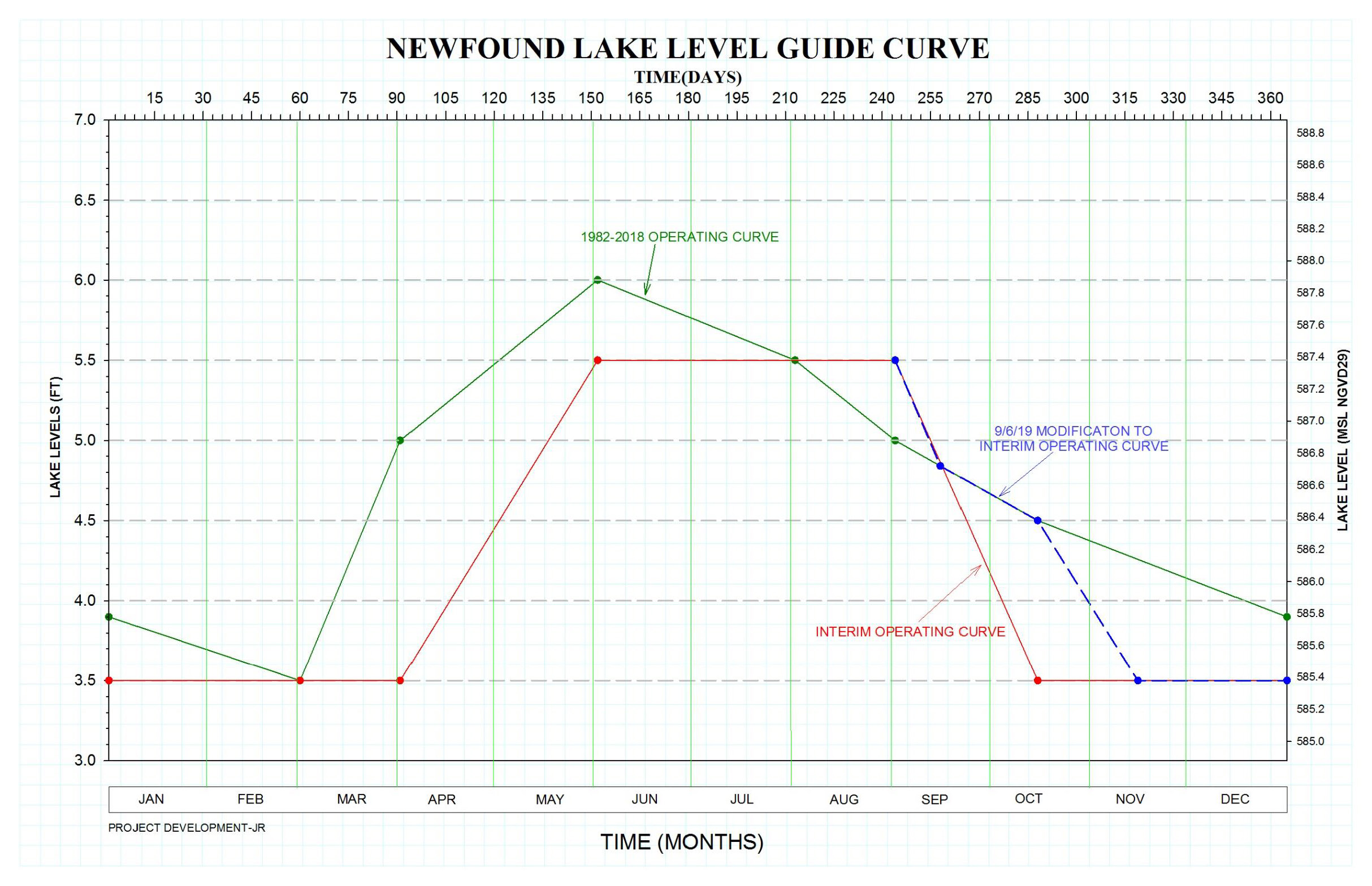LAKE LEVEL
A Balancing Act
The NHDES has responded to the public input from the August 30th, 2019 hearing. To read their comments follow this link to the public notice. Otherwise see the modified interim lake level management plan below.
A graph of the previous, interim and modified interim lake level management plan is shown below. The major differences between the interim plan and the previous plan include a quicker rise in lake level in the spring, a steady lake level roughly 6″ lower than the historical levels through the summer, and a quicker drop of lake levels in the fall. Based on public feedback this was modified to become an extended and slower drawdown. The interim plans are a two-year demonstration test scheduled for completion in late 2020 / early 2021. Throughout this time period, the NHDES Dam Bureau will assess results and next steps with input from Newfound community stakeholders.

In April 2018, the state was petitioned to perform a lake level investigation for Newfound Lake. There was a public input session on August 28th, 2018. All stakeholders are invited to participate in the process, including shorefront property owners, Fish & Game, NH Dam Bureau, and the Hydroelectric Dam Operators. For more information, several presentations on this project are available here:
Initial fact-finding presentation from Ecologist Rick Van De Pol, PhD
Presentation at Bridgewater Town Hall, August 28, 2018, from the NHDES Dam Bureau
Testimony to NHDES from Ecologist Rick Van De Pol, PhD
Testimony to NHDES from the Newfound Lake Region Association
Presentation from Rick Van De Poll, PhD, Feb 7, 2018 Stakeholder meeting
Thanks to everyone who attended the February 26, 2019 public forum for the Newfound Lake Level.
The water level of Newfound Lake is controlled, for the most part, by a dam on West Shore Road that is owned by the State of New Hampshire Dept. of Environmental Services (NHDES). The dam marks the beginning of the Newfound River and is used to adjust the lake’s water level and provide the desired riverflow.

Various stakeholders in the region have differing interests and needs when it comes to lake level and river flow, so it is a balancing act to satisfy them all.
- Beach owners and homeowners: Prefer lower levels over the summer to expose swimming beaches and at other times to access/repair shoreline structures
- Boaters: Prefer higher and steady water levels for navigation and access (launching).
- Fisheries: Native species that spawn in late fall require high and steady water levels over the winter to protect from freezing and loss of habitat.
- Aquatic Plants: Extremes in lake levels foster growth of opportunistic or invasive species.
- Power Generation: Prefers steady and moderate flows in the Newfound River to optimize output.
- Everyone: Concerned about flooding by heavy rains, which raise the lake level at the rate of roughly 14 inches for every inch of rainfall, faster than the dam can let it out.
In 1982, NHDES established a seasonal management schedule that has the lake level at its highest point on June 1, gradually dropping through the summer and maintained at a lower level through the winter. Spring runoff can then raise the level up to its maximum. Extreme weather patterns and abnormal years can overcome the dam’s capacity to deliver targeted lake levels at all times.
